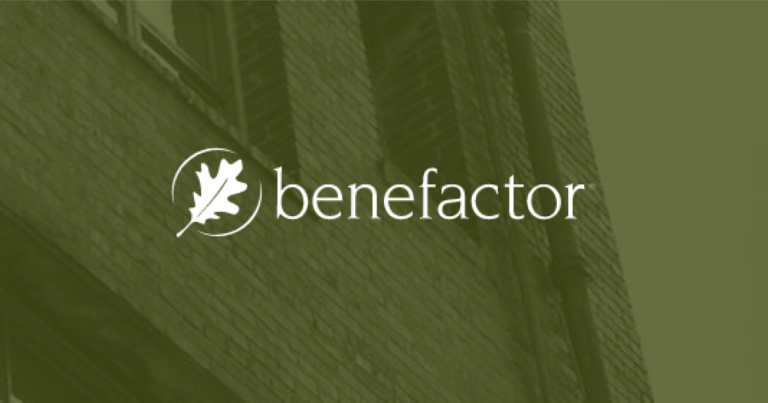Endowments offer benefits to the nonprofit organization, to the donor, and the fundraiser.
An excerpt from Diana Newman’s book Nonprofit Essentials, Building Endowment
To The Organization:
There are advantages of a significant and growing endowment to the board of directors, CEO, officers, fundraisers, and staff members of the nonprofit organization. Here is a list of at least some of the benefits:
▪ Creates an ongoing source of income. Because a permanent endowment is an invested pool of money that provides a reliable source of income in perpetuity, the organization can count on annual distributions for its charitable work. Funds may be designated for endowment by the donor or by the board of directors. With appropriate investment and spending policies, the endowment’s purchasing power will be preserved. Thus, a fund that generates income to operate a reading recovery program for elementary students today can be designed to produce income to run the same program 20 years from now and beyond. The endowment also grows over time with additional gifts from multiple donors.
▪ Enhances stability and prestige. A well-managed endowment sends a message of planned long-term stability, fiscal responsibility, and financial viability. It enhances the organization’s prestige and credibility.
▪ Relieves pressure on the annual fund. Annual fund goals tend to rise right along with the cost of providing services and operating the organization, but the ability of the annual fund to meet increasing demand is not limitless. An endowment can provide annual support for the organization’s operating budget.
▪ Allows program expansion. Program expansion can be funded with distributions from endowment funds used for scholarships, faculty chairs, staff positions, lecture series, research, facility maintenance, equipment and supplies, and for any other purpose designated by the donor or by the board of directors.
▪ Provides independence. Endowment contributions designated for specific purposes can provide a measure of independence from economic, governmental, and political forces. For example, an Indiana retirement community was in danger of losing its chaplain when the board resolved to terminate all programs except those that generated enough income to be self-sustaining. The chaplaincy program survived, however, after a concerned donor made a gift of endowment funds that were sufficient to support the program. The program continues and also enjoys a measure of independence from the need to generate income to support itself.
▪ Offers flexibility for management. Endowments offer options to meet new challenges by providing greater financial flexibility and self-sustaining income streams. Endowments can augment uncertain income sources, broaden the overall revenue mix, improve the income statement, and provide leverage for bond-rating capacity and loans for new facilities.
▪ Builds pipeline of future gifts. A growing endowment builds a pipeline of gifts that will mature in the future, because many endowment gifts are designed to be used at a future date, often upon the death of the donor. An organization that attracts deferred gifts enhances its future financial security and positions itself to enjoy increasingly larger gifts in the future.
▪ Encourages outright gifts. Outright gifts as well as other kinds of planned gifts are encouraged by building an endowment. Donors who have decided to make an endowment gift to the organization are likely to make gifts to the organization’s annual and capital campaigns as well. After all, they have already made a commitment to the organization’s future
To the Donor Endowment contributions—both those that create new funds and those that add to existing funds—provide numerous benefits to donors, which the development staff must understand and be able to articulate to prospective contributors and to their financial and legal advisors.
To The Donor:
Endowment contributions—both those that create new funds and those that add to existing funds—provide numerous benefits to donors, which the development staff must understand and be able to articulate to prospective contributors and to their financial and legal advisors.
▪ Perpetuates the donor’s values and priorities. An endowment gift can perpetuate the donor’s values in the wake of change; it can provide assurance that programs that are important to the donor will survive. By creating or adding to a permanent endowment for a designated purpose, the donor seeks to enable and obligate the organization to carry out his or her expressed wishes, so long as it is practical and possible to do so. A restricted endowment can ensure organizational support for the donor’s priorities.
For example, the Indiana donor who established the chaplaincy endowment at the retirement community did so because he valued the chaplain’s services during his wife’s stay at the center, and he wanted to ensure that the program would continue even during budget crises at present or in the future.
▪ Creates a sense of immortality. Because an endowment gift will be invested permanently, it can serve as a permanent tribute to the donor and extend the donor’s values for future generations. It can offer the donor a sense of immortality, a way to define the donor’s place in the cosmic scheme of things through support of an important cause.
▪ Makes significant investment in the future. Many donors make larger endowment gifts, often through planned giving vehicles, than they dreamed were possible. Endowment gifts are sometimes the donor’s last (and largest) gift to the organizations they value most. Donors can receive great satisfaction from making a significant contribution from assets accumulated over their lifetimes. In the case of deferred planned gifts, the gifts may be the donors’ final acts of contributing to the organization or the work that they find most valuable.
▪ Endows annual gifts. An endowment gift gives donors the option to perpetuate their annual gifts. For example, the $100 per year donor might make a $2,000 endowment gift in order to continue annual gifts of $100 to the organization in the future. This concept is often appealing to the consistent older donor. For example, an 82-year-old woman who had given $1,200 to her local chapter of the Multiple Sclerosis Society each year since her husband was diagnosed with multiple sclerosis 15 years earlier found comfort in creating a $25,000 deferred endowment, which, at 5%, generated the same $1,200 annually for the Society following her death.
▪ Allows incremental funding. Some donors do not want to give away their assets during their lifetimes, yet they want to see the benefits of the gift immediately. They establish endowment gifts through bequests or other gift vehicles that take place after their lifetimes. Then they make gifts annually that represent the amount that would have been distributed from the endowment if their gift had already been received. In this way, their annual gifts can provide the support currently that their planned gift will provide eventually.
▪ Provides lifetime income. Some kinds of endowment gifts—split interest gifts—pay income to the donor for life, with the remainder going to the charity’s endowment after the donor’s death. These kinds of gifts can provide stable income to the donor during retirement or can help the donor meet family obligations.
▪ Alleviates management burden. Some donors, particularly as they become older, are uneasy with managing their assets and making investment decisions. A split interest gift enables the donor to receive regular income for life without the burden or cost of managing investments.
▪ Permits additions at a later time. An endowment fund can be added to later. The donor, or the donor’s friends and family, can add to a named fund from time to time by simply identifying the fund as the object of the gift. It makes a handy vehicle for people, especially family members, who wish to make meaningful gifts to people who already have enough “stuff.”
To The Fundraiser:
The fundraising professional who is charged with overseeing the growth of the endowment—and all other fundraisers on the staff—must understand the advantages of a large and growing endowment from their standpoint if they are to make endowment building a priority.
▪ Protects against ever-increasing annual fund goals. Endowments can protect against unreasonable, ever-increasing annual fund goals. Many organizations attempt to balance their budgets by increasing annual fund goals, even when the goals are not realistic or attainable. A significant endowment offers the opportunity to mitigate difficult economic circumstances and even out the organization’s inclination to focus solely on short-term annual fundraising goals.
▪Offers options to donors. Increasingly, sophisticated donors expect endowments as an option. Fundraisers want and need to have a full array of giving opportunities to offer donors. Endowments are attractive for all of the reasons described previously and, often, because they do not have as much pressure of immediacy that exists with annual or capital gifts.
▪ Devotes resources toward it. Once endowment building is institutionalized, the organization’s resources—staff, board, money, time—are consistently devoted to it. Fundraisers at organizations committed to growing endowments spend at least a portion of their time with prospective endowment donors and talk about the endowment routinely with all prospective donors. Small and midsized organizations may have limited staff and other resources, but they can still carry out a strategic endowment program, even if it is scaled back. Organizations with large staffs make endowment building the full-time responsibility of one or more staff members. The development program, regardless of the size of the organization, balances its efforts to bring in dollars today while building an endowment for the future. Fundraising professionals spend time growing the endowment and are measured appropriately for their efforts, as discussed in more detail in Chapter 8.
▪ Attracts new donors. Endowments often tap new and different donors for support. These donors focus on gifts of assets rather than cash, and gifts from net worth rather than cash flow. Because of their opportunity for long-term and future focus, endowments attract committed visionaries. After endowment donors have made their commitments, they often become consistent annual donors as well, because they have made significant commitments to the organization’s future.
▪ Focuses on the donor’s objectives. Endowment fundraising demands a donor-centered focus. Endowment fundraising helps leadership and fundraising staff members remember that the donor is in control of the gift. The donor’s money and the donor’s dream drive the gift. The donor determines the size and form of the gift. The donor determines the timing of the gift. The organization must be prepared to focus on meeting the donor’s intellectual, psychological, and financial needs. Even though the organization may want unrestricted current contributions, the donor’s wishes trump the organization’s needs every time. The organization must be willing to be as visionary as the donor, perhaps taking risks in programmatic and financial areas.
Click here to order a copy of Diana Newman’s book Nonprofit Essentials, Endowment Building to read more






